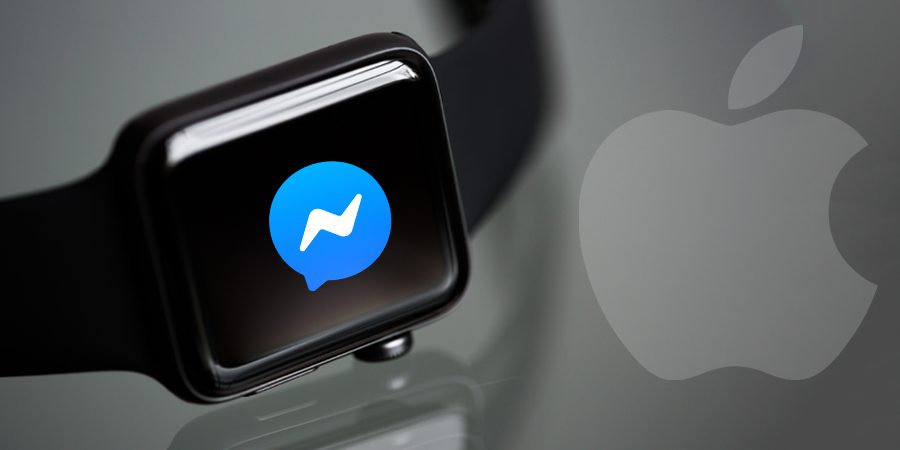In this article, we delve into the recent surprising announcement from Meta. Facebook Messenger’s functionality on the Apple Watch will undergo some significant changes starting from June.
As we unpack the reasons behind this decision, we’ll also look at the alternatives available for Apple Watch users and what this development means for the future of smartwatch apps.
Key Takeaways:
- Facebook Messenger for Apple Watch is losing functionality from June – users can receive but not respond to messages from their watch.
- This is part of a broader trend of popular apps pulling their standalone Apple Watch apps, including Google Maps, Amazon, eBay, Slack, and Target.
- While Apple Watch users may be dismayed, those with Google Pixel Watch or Samsung Galaxy Watch 5 will soon be able to use WhatsApp from their wrist.
- Other messaging alternatives such as WeChat and Glide are available for Apple Watch users post-Messenger.
The End of Messenger’s Reign on Apple Watch
It’s the end of an era.
The widely-used Facebook Messenger app is about to lose some of its flair on the Apple Watch.
As of the beginning of June, Meta – the rebranded parent company of Facebook – has decided to limit the functionality of Messenger on Apple’s flagship wearable.
Despite the change, Apple Watch users will still be privy to receiving Messenger notifications.
Yet, the convenience of crafting responses right from their wrist will soon become a thing of the past.
This surprising announcement has left the tech world buzzing, and Apple Watch users have been left wondering what’s next.
The Exodus of Standalone Apps from Apple Watch
Messenger’s departure from the Apple Watch ecosystem doesn’t stand alone.
It seems to be part of a larger trend.
Over the years, we have seen a gradual reduction in support for standalone apps on the Apple Watch platform.
Big players such as Google Maps, Amazon, eBay, Slack, and Target have all chosen to retreat.
They’ve pulled their apps from Apple Watch, signaling a possible shift in how tech giants view the utility of smartwatch apps.
Why this trend?
Some speculate it’s a matter of cost-cutting and resource-saving.
Developing and maintaining apps for smartwatches can be a resource-intensive process.
For some companies, the return on investment may not justify the effort.
Are There Any Alternatives for Messaging on Apple Watch?
So, what happens next for those who relied heavily on Messenger for their Apple Watch interactions?
There’s no need to despair.
Alternative messaging apps are available that maintain full functionality on Apple Watch.
WeChat and Glide are two such examples.
These apps provide similar features, enabling users to receive and reply to messages directly from their Apple Watch.
While they might not hold the same ubiquity as Facebook Messenger, they certainly offer a viable alternative.
What This Means for the Future of Apple Watch Apps
It’s important to consider what this shift means for the future.
The departure of Facebook Messenger and other major apps from the Apple Watch platform could potentially reshape the smartwatch app landscape.
But it isn’t all doom and gloom.
For instance, WhatsApp, another messaging giant owned by Meta, is expanding its presence in the wearable tech arena.
It’s soon to be available as an app on Google’s Wear OS.
Owners of Google Pixel Watch, Samsung Galaxy Watch 5, and other smartwatches will soon be able to send WhatsApp messages right from their wrist.
When it comes to Apple Watch, there’s currently no confirmation on whether WhatsApp will step in to fill the void left by Messenger.
Yet, it’s clear that the game isn’t over for messaging apps on smartwatches.
Conclusion
In a nutshell, Facebook Messenger’s decision to limit functionality on Apple Watch is a significant development.
It’s reflective of a larger shift in how tech companies view and utilize the smartwatch platform.
While the news might be a disappointment to some, it also paves the way for other apps to step up and cater to Apple Watch users’ needs.
In the ever-evolving world of technology, change is the only constant.
As we keep tabs on these changes, we can better understand the trajectory of smartwatches and their apps in the digital era.
It’s a story that’s still being written, and as always, the next chapter promises to be an interesting one.
 Sections of this topic
Sections of this topic
















